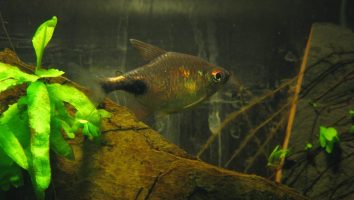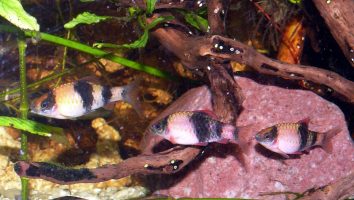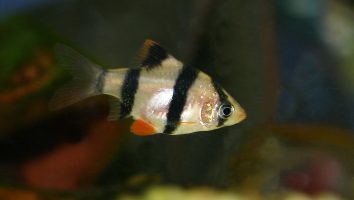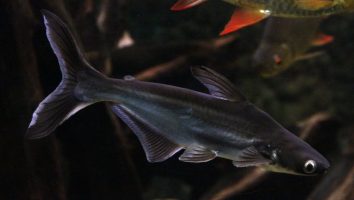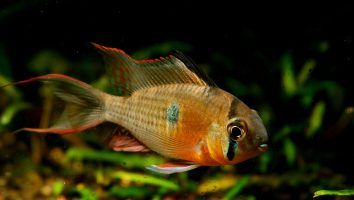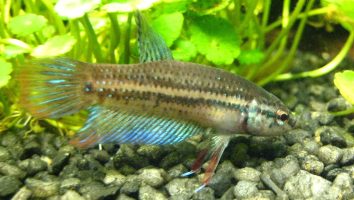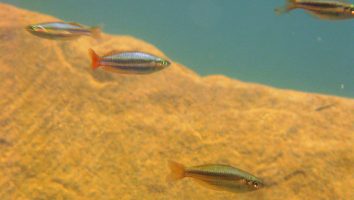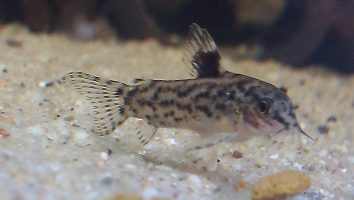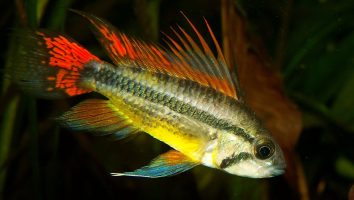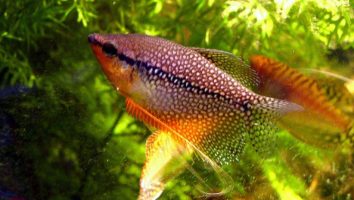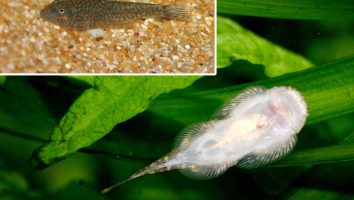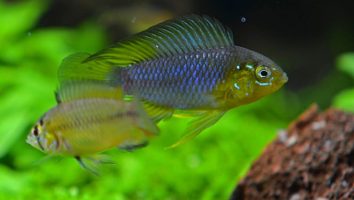The marbled hatchetfish is a beautiful and unique freshwater fish that is perfect for the nano aquarium.
This species is relatively easy to care for and makes a great addition to any peaceful community tank.
Despite their small size, hatchetfish are rather active swimmers and do best in groups. So, if you’re thinking of getting one (or a few), be sure to have enough space in your tank.
In this guide, we’ll teach you everything you need to know about marbled hatchetfish care. You’ll learn about their diet, tank mates, size, and more!
Table of contents
Species overview
The marbled hatchetfish (Carnegiella strigata) is a freshwater fish that’s found in the Amazon River basin in South America.
They are surface-dwellers that prefer to live in slow-moving waters with a lot of vegetation. This is something that’s not too difficult to replicate in an aquarium setting.
One of the most notable things about the marbled hatchetfish is their ability to jump out of the water. They’re known to do this quite regularly in the wild, and it’s something you’ll need to be aware of if you decide to keep them in your tank.
Fortunately, they’re not too difficult to catch if they do happen to jump out.
These fish are relatively small, which makes them a good choice for freshwater nano aquariums.
Appearance
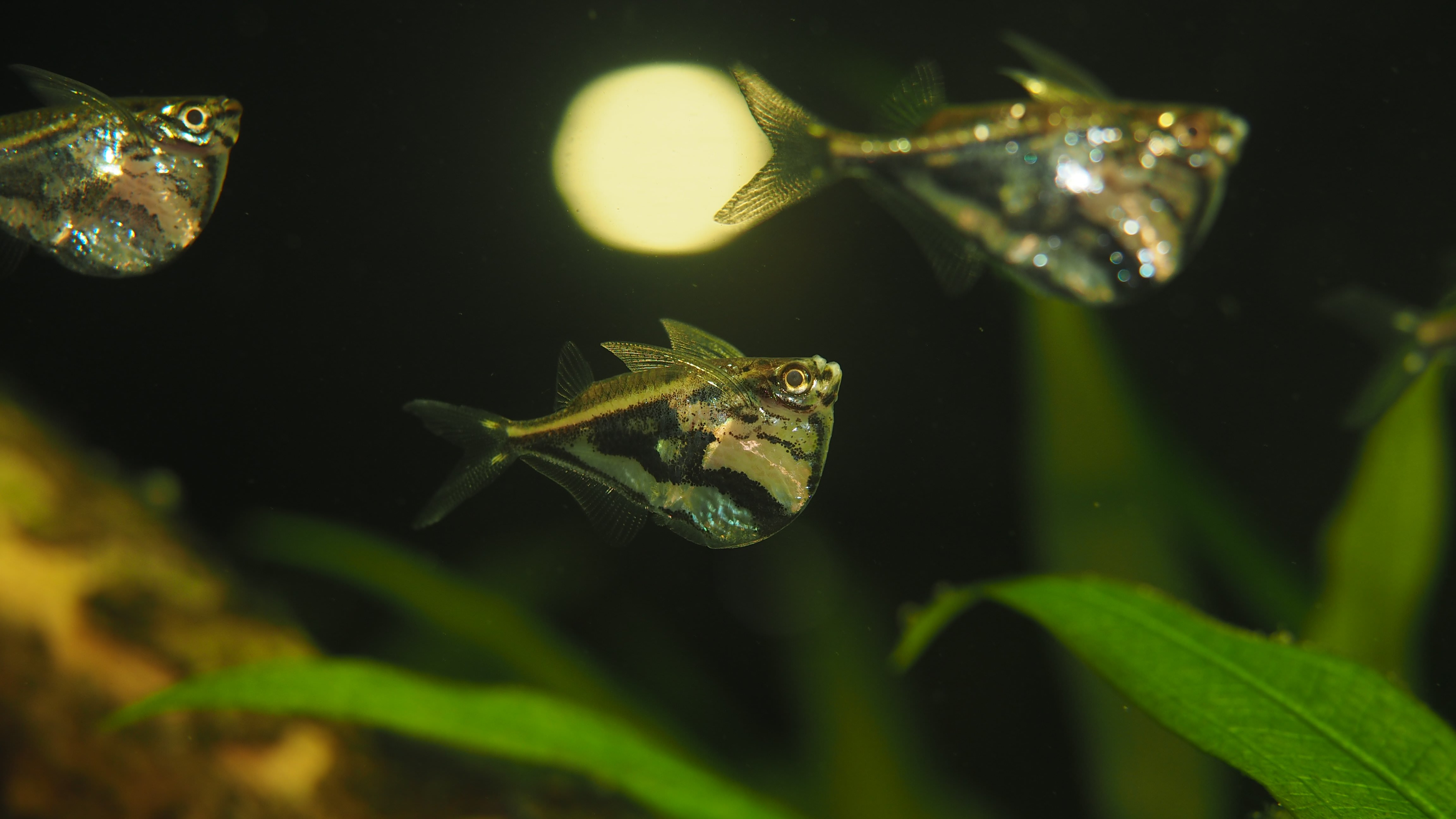
The Marbled Hatchetfish is an interesting looking creature, to say the least. The first thing you’ll notice about them is their long and thin body shape.
These fish are laterally compressed (flattened from top to bottom), which gives them a very unique silhouette.
The body of the Marbled Hatchetfish tapers down to a point at both the front and back. Their dorsal fin is placed quite far back on their body and looks like half of a circle.
The anal fin is smaller and placed just behind the dorsal fin. Both of these fins are translucent and have a black line running through the middle.
The pectoral fins are small and placed just behind the gill slits. The caudal fin is also small and slightly forked.
The Marbled Hatchetfish get their name from the marble-like patterns on their body. These patterns can be different colors depending on the fish. The most common colors are black, brown, and gold.
These fish also have two long barbels on their lower jaw that they use to help them find food.
Lifespan
Marbled hatchetfish have a lifespan of 3-5 years in captivity. In the wild, their lifespan is likely much shorter due to predation and other factors.
As with most fish, their lifespan will be determined by the quality of care they receive. Things like water quality, diet, and stress can all shorten their lifespan.
Size
Marbled hatchetfish are very small, only reaching a maximum length of about 1.5 inches.
Tank
Tank Size
The marbled hatchetfish is a small, peaceful fish that is a great addition to any community tank. The recommended minimum tank size for these fish is 10 gallons.
While they can technically survive in a smaller tank, they will be much happier and healthier in a larger tank where they have more space to swim. If you’re looking to keep a school of hatchetfish, you will need a larger tank as well. We recommend a minimum of 20 gallons for a small school of 3-5 fish.
Water Parameters
Marbled hatchetfish are another species that come from the Amazon River. As such, they prefer the same warm water, slightly acidic conditions.
This is a fairly delicate fish, so you’ll need to be more precise with the parameters below. Even a small change can cause stress, which can lead to health problems and even death.
Here are a few water parameters that will help you create a healthy environment for your hatchetfish.
- Water temperature: 70 to 80 degrees Fahrenheit
- pH levels: 6.0 to 7.0
- Water hardness: 2 to 12 dGH
- Alkalinity Levels: 4-8 dKH
What To Put In Their Tank
As for décor, we recommend using a mixture of live and fake plants. Silk plants are a good option since they’re not as easily disturbed as live plants.
You can also use driftwood and rocks to create hiding spots and add some visual interest to the tank. Just make sure that any rocks you use are smooth and won’t damage the delicate fins of your fish.
As for the substrate, a fine gravel or sand is best. This will help prevent any digestive issues if your fish accidentally swallows some while feeding.
Common Diseases
The marbled hatchetfish is a rather hearty fish that doesn’t fall ill very often. However, like all animals, they are susceptible to disease if the conditions in their tank are not ideal.
The most common disease that affects this species is ich. This is a parasitic infection that can quickly become serious if it’s not dealt with.
The most obvious sign of ich is the presence of white spots on the body of your fish. If you notice this, it’s important to take immediate action.
There are plenty of other potential diseases that can affect this species as well, but they’re not as common.
Another thing to look out for is infection from cuts. The most common cause of this is keeping your hatchetfish in a tank with a rough substrate (or aggressive species that want to fight).
In general, the best way to prevent these fish from getting sick is to maintain the quality of the water in their tank. A tank with clean and stable water conditions always leads to healthier fish who are more resistant to disease.
Behavior & Temperament
Marbled hatchetfish are very peaceful and shy fish. They don’t like a lot of commotion and prefer to stay hidden among the plants in their environment.
They are also known to be jumpers, so it’s important to have a lid on your tank to prevent them from escaping. Even the tiniest hole can be an opportunity for these fish to make a break for it!
Marbled hatchetfish are nocturnal, so you’ll see them the most at night. They’ll come out to scavenge for food, but will quickly return to their hiding spots when they’re done.
During the day, they’ll stay hidden and rest. This is when they’re the least active, so don’t be alarmed if you don’t see them much during the daytime hours.
Tank Mates
Marbled hatchetfish are best kept in groups of six or more. They’re a peaceful species that doesn’t bother other fish.
However, they can be a little shy. Having a group will make them feel more comfortable and reduce the chances of stress.
When it comes to tank mates, you’ll want to stick with peaceful species. These fish are small and can’t defend themselves against aggressive tank mates.
Some good options include:
- Tetras
- Guppies
- Danios
- Corydoras
- Plecos
- Shrimps
Breeding
Marbled hatchetfish breeding is a bit different from other species since they’re not egg-layers. Instead, the female will release live young into the water.
This species is known to be difficult to breed in captivity. If you’re up for the challenge, here’s what you need to do.
First, you need to have a group of at least six fish. It’s best to have two females for every male. Then, you need to set up the tank.
Marbled hatchetfish prefer slow-moving water. They also like to live in densely-vegetated areas. So, make sure your tank has plenty of plants.
You should also use a sponge filter to avoid sucking up the fry.
When everything is set up, it’s time to start changing the water. Do a 50 percent water change every day for two weeks. Then, do a 75 percent water change.
The female will release her young after the 75 percent water change. The fry will be very small, so make sure to use a fine-mesh net when you do your next water change.
The fry will feed on microscopic organisms in the water. You can supplement their diet with live baby brine shrimp.
Conclusion
The Marbled Hatchetfish is a beautiful and unique freshwater fish that is perfect for the beginner aquarist. They are very easy to care for and do well in a community tank.
The only downside to these fish is that they are very sensitive to changes in their environment. This means that you will need to take special care when acclimating them to your tank.
Other than that, these fish are a joy to own and we highly recommend them!

